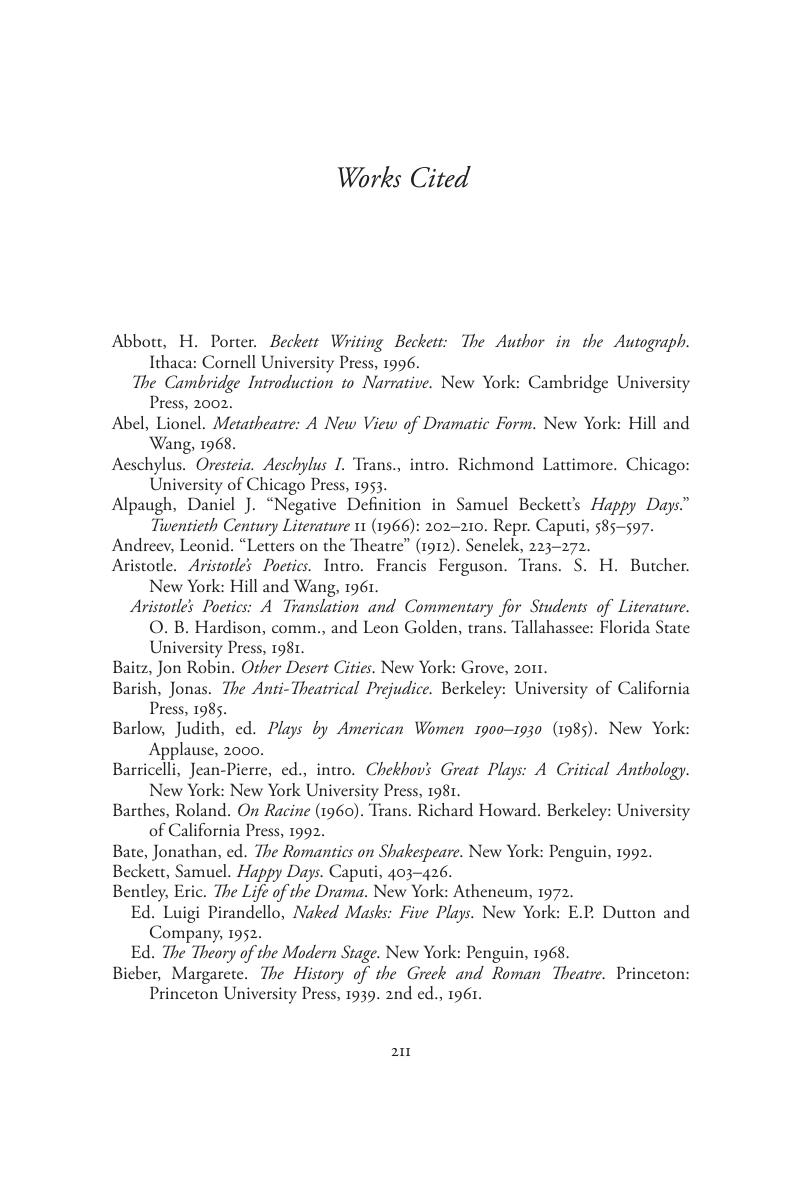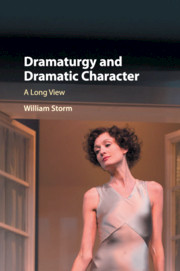Book contents
- Dramaturgy and Dramatic Character
- Dramaturgy and Dramatic Character
- Copyright page
- Dedication
- Contents
- Book part
- Introduction: Dramatis Personae
- Chapter 1 The Art of Dionysus
- Chapter 2 Character, Form, and Genre
- Chapter 3 Character by the Rules: Neoclassicism and Beyond
- Chapter 4 Scientific Character: The How and Why of Naturalism – and After
- Chapter 5 How Characters Think
- Chapter 6 Anti-Character
- Chapter 7 Dramatic Character Today
- Notes
- Works Cited
- Index
- References
Works Cited
Published online by Cambridge University Press: 05 February 2016
- Dramaturgy and Dramatic Character
- Dramaturgy and Dramatic Character
- Copyright page
- Dedication
- Contents
- Book part
- Introduction: Dramatis Personae
- Chapter 1 The Art of Dionysus
- Chapter 2 Character, Form, and Genre
- Chapter 3 Character by the Rules: Neoclassicism and Beyond
- Chapter 4 Scientific Character: The How and Why of Naturalism – and After
- Chapter 5 How Characters Think
- Chapter 6 Anti-Character
- Chapter 7 Dramatic Character Today
- Notes
- Works Cited
- Index
- References
Summary

- Type
- Chapter
- Information
- Dramaturgy and Dramatic CharacterA Long View, pp. 211 - 222Publisher: Cambridge University PressPrint publication year: 2016



